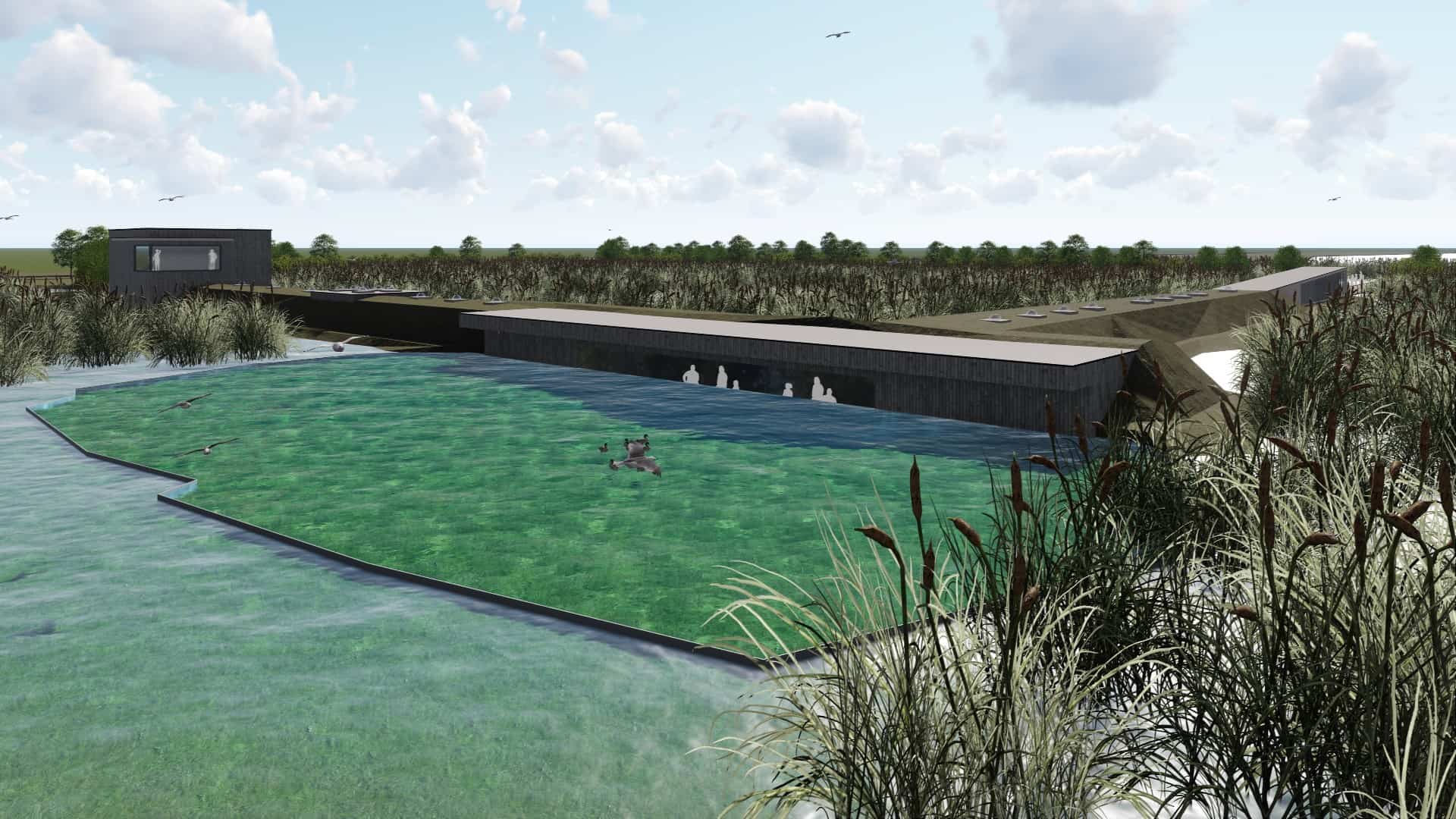A unique ecotourism facility will be created in the area of the Hortobágy fishpond, a place where visitors can observe the bird population in their natural environment, living up close and yet undisturbed. The Bird Theater will provide an experience for the general public that previously only a small group of bird watchers could experience.
The primary purpose of the facility is to allow those interested in birds to see them in a way that was not previously possible, but it will also provide professional photographers with the right conditions to take pictures. The idea for the project was given by Bence Máté, a world-famous nature photographer, and the project is implemented by the Active and Ecotourism Development Center (AÖFK).

Designed for the Hortobágy fishpond, the Bird Theater is a structured and glazed building, where visitors can observe the natural behavior and lifestyle of shy birds, especially water-bound ones, through guided tours. They can gain an insight into the animals ’busy lives from the occupation of the nests, through the bloody battles in the air, the battles for food, the feeding of the chicks, and the rearing until they leave the nest.

The capacity of the theater hall of the Bird Theater is 40-50 people, so it provides an opportunity to hold an environmental, biology, or class teacher class for a small number of classes. The structure is designed so that the water surface is approximately at eye level. “This idea has been formulated in my head for about 10 years. I felt that this magical world, which unfolds before our eyes through the ambush, should be known to a wider audience, as nature conservation will be key in the coming period, ”said nature photographer Bence Máté, the dreamer of the Bird Theater.

The interior is soundproofed so that the sound of the inevitable conversation in larger groups does not disturb the birds. Hunting, feeding, or resting birds can thus be observed from a distance of a few meters, which is not yet the case, with the exception of litters of small capacity, especially for photographers. The orientation of the building allows for as long a backlit use as possible using one way, detective glass. In addition to the glazed building, the Bird Theater will also include an elevated water show pool, educational trail, and lookout tower.“When Bence Máté presented this unique idea, the Office of the Government Commissioner for Active Hungary was happy to take the initiative. It is important that this investment, in addition to its tourism and economic impact on the region, can help educate the environment and love nature, thus encouraging visitors to preserve and protect it, ”said Máriusz Révész , Commissioner for Active Hungary, adding that the project is perfect. it is also in line with the goals of the National Tourism Development Strategy 2030.
The unique visitor center will be built on the territory of the Hortobágy National Park Directorate. The Hortobágy National Park is perhaps the most well-known bird spot in Hungary, and the interest in its bird world is growing year by year among both domestic and foreign birds. The region is home to 342 bird species, 152 of which also nest in the area. Among other things, all domestic herons, White-faced Ibis, cormorant, and bluebird can be found here. During the autumn and spring bird migrations, tens of thousands of wild geese and cranes flock through the countryside. The lake was built as the first fishpond system in Hortobágy more than 100 years ago. Over time, man-made fishponds have been reclaimed by nature, so the wetland that has developed here deserves protection along with the national park because of its rich birdlife.
The licensed plans for the Bird Theater are ready, so construction can begin. The new visitor center is scheduled to receive its first visitors in 2 years (2023).